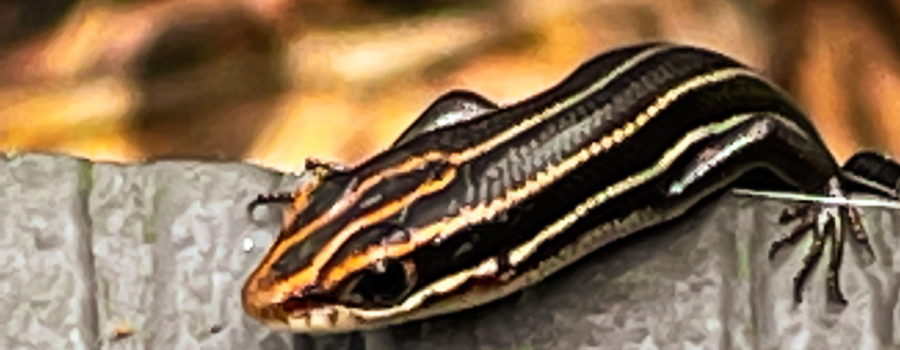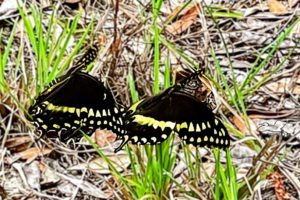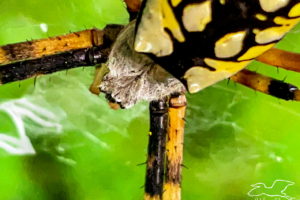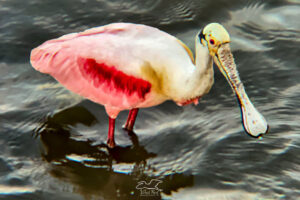The Southeastern Five-lined Skink has an Interesting Lifestyle

A few days ago I headed outside to feed the wild things, and when I opened the gate to the back area where I feed I startled a beautiful little skink who was sunning on the first step (skinks are reptiles like the anoles and fence lizard). One advantage to shooting with an iPhone is that I have it with me most of the time. I quickly pulled it out of my pocket and took some shots before it decided to hurry off. It actually turned out to be pretty cooperative as long as I moved slowly. At one point, it did decide to go from the top of the step to the side, but I guess it was curious about me, too, because before long it’s little head popped back up to see where I was.

I had seen these skinks around before since they’re fairly common in this area, but I’d never been in a position to photograph them before. This particular skink was a juvenile. The juveniles have a dark brown or even black background color with five bright white to yellowish stripes running the length of the body. As they mature, the background color becomes lighter, and the stripes begin to fade. This particular skink was also still pretty small. Juvenile southeastern five-lined skinks are also well known for their bright blue tails. It looked like my subject had already had a run in with some type of predator. When skinks are threatened or caught they are capable of breaking off their tails. The tail will continue to wiggle for a bit after it has broken off and hopefully it will distract the predator, allowing the skink to escape. This little fellow was in the process of regrowing his tail, which usually happens fairly quickly.

The southeastern five-lined skink is closely related to and looks very similar to the five-lined skink and the broad-headed skink. The southeastern five-lined skink has a more limited range, though. It is only found from Virginia south through Florida and west into Mississippi and Louisiana. It also tends to be less arboreal than the broad-headed skink and prefers a dryer habitat than the five-lined skink. The southeastern five-lined skink is common in pine woods or mixed pine woods, coastal plains, and small offshore islands. It is frequently found under rotting logs, large stones, or decaying vegetation, but like all reptiles it likes to come out and warm itself in the sun. The females also lay their eggs under rotting logs or in the crevices of the log itself. These skinks are carnivores and eat mainly invertebrate prey including spiders, grasshoppers, beetles, crickets, worms, centipedes, and even occasionally neonatal mice.

It was kind of a shame that this little guy had lost his tail since the bright blue tail is my favorite part of the skinks, but it may well have saved his life. I was glad to finally get to photograph a skink. After I had taken my pictures, I went and fed the wild things (Poppa Cardinal was already cussing me for the delay in his meal!), and by the time I got back to the steps the little skink was gone. I’m hoping that he will be around again so I can watch that tail regrow and watch his colors change. I guess time will tell.






Recent Comments